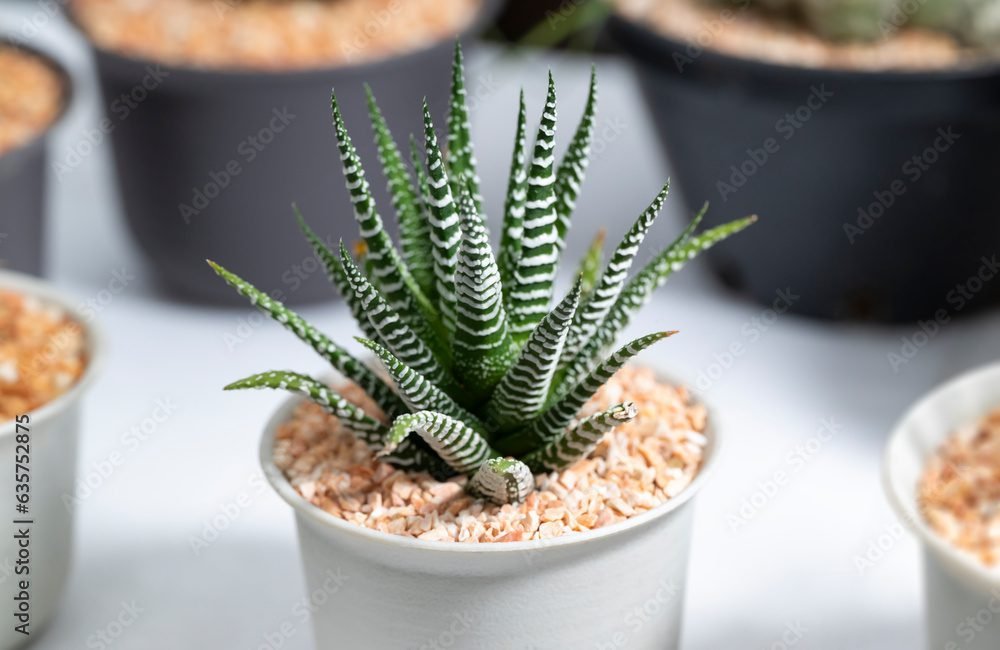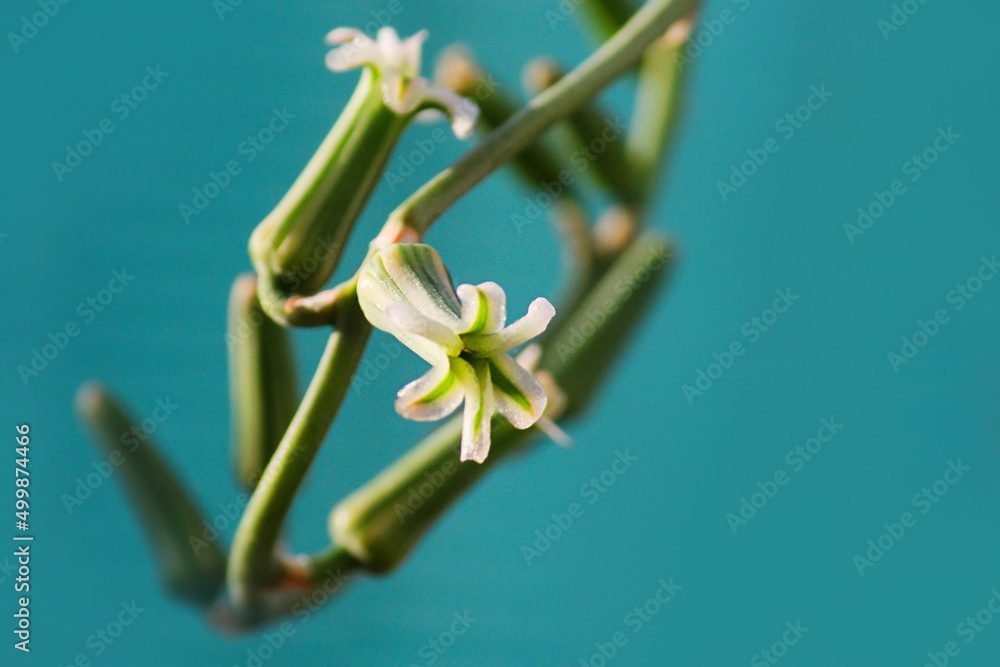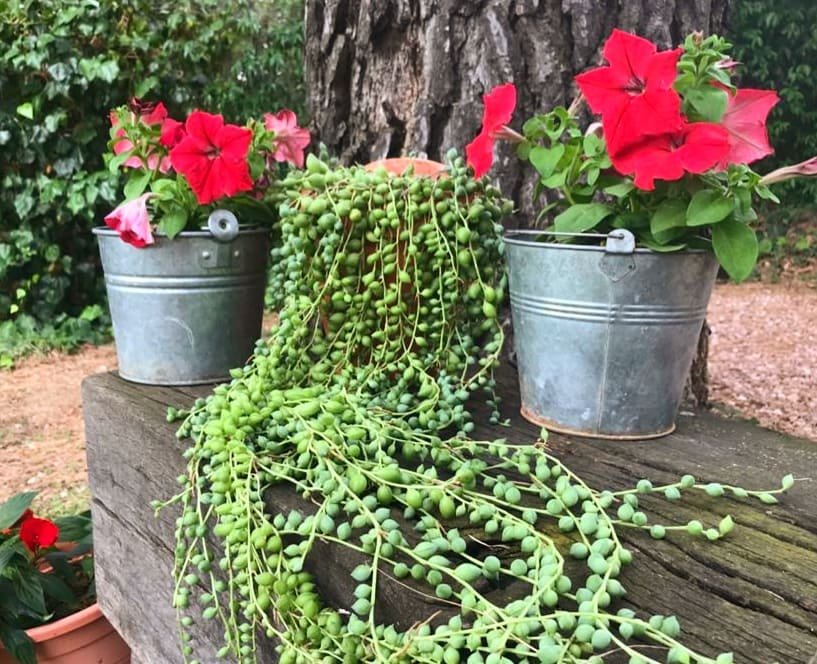Introduction to the World of Haworthias and Hand-Pollination
Gardening has always been more than just a hobby for me; it’s a journey that connects me deeply with the heart of nature. Among the various plants that grace my indoor garden, the Haworthia holds a special place. Its succulent leaves and modest size are delightful, but what truly elevates its presence is the art of hand-pollination. This guide is a reflection of my personal journey with these plants, sharing the knowledge and joy I’ve gained through hand-pollinating Haworthias.
Understanding Haworthia and Its Unique Pollination Needs
In the wild, Haworthias rely on natural pollinators to flourish. However, in our homes, these natural pollinators are often absent, making hand-pollination a vital practice for their successful blooming and seed production. Through this guide, I’ll share how mimicking nature’s process in your home can not only ensure the survival of these beautiful species but also enhance their vitality and appearance.


The Transformative Power of Hand-Pollination
I remember the first time I hand-pollinated a Haworthia. The transformation in its flowering and overall health was astounding. But beyond the technical benefits, hand-pollination connected me more intimately with my plants. It’s about embracing the role of a nurturer and experiencing the thriving life you support.

Preparing for Your Hand-Pollination Journey
Before diving into hand-pollination, it’s important to prepare both yourself and your garden. I’ll guide you through selecting the right tools, such as a small brush or cotton swab, and share tips on ensuring your Haworthia is in the best health. Remember, creating a stress-free environment is key for successful pollination.
Timing is Everything: Identifying the Right Bloom Stage
One crucial skill in hand-pollination is identifying the correct stage of bloom. Timing is everything. I’ll share my experiences and tips on how to catch the flowers at just the right moment for effective pollen transfer.
Step-by-Step Guide to Hand-Pollinating Haworthias
Hand-pollination is a delicate yet rewarding process. Here’s a detailed guide with each step explained:
- Select a Bloom: Look for flowers that are just opening. This is the perfect time for pollination.
- Collect Pollen: Gently brush the stamen of a flower with your brush or swab to collect pollen.
- Transfer Pollen: Carefully brush the pollen onto the stigma of another flower.
- Repeat: Continue this process with other flowers for better chances of successful pollination
Choosing the Right Tools for Hand-Pollination
The success of hand-pollination greatly depends on using the right tools. Here’s a simple table listing the essential tools and their uses:
| Tool | Use |
|---|---|
| Soft-bristled brush | For gently collecting and transferring pollen |
| Magnifying glass | To get a closer look at small flowers |
| Clean tweezers | For precision in handling small plant parts |

The Art and Technique of Transferring Pollen
Transferring pollen is an art that requires patience and a gentle touch. Here are some key points:
- Gentleness: Ensure a soft touch to avoid damaging the delicate flowers.
- Accuracy: Aim to get the pollen directly onto the stigma for effective pollination.
- Consistency: The more flowers you pollinate, the higher your chances of success.
Aftercare: Nurturing Your Haworthia Post-Pollination
After hand-pollinating your Haworthia, it’s important to provide the right care:
- Monitor Growth: Keep an eye on the flowers for signs of successful pollination.
- Watering and Light: Continue with regular care, adjusting as needed for your plant’s health.

Recognizing Success: Signs of Effective Hand-Pollination
Understanding the signs of successful hand-pollination can be very rewarding. Look for:
- Seed Pod Formation: This is a clear sign that your pollination efforts have been successful.
- Healthy Growth: Vigorous growth and blooming indicate a thriving plant.
Addressing Challenges in Hand-Pollination
Hand-pollination can sometimes be tricky. Here’s a bullet point list of common challenges and solutions:
- Timing Difficulties: If you’re struggling with timing, observe the flowering patterns for a few cycles to get a better sense.
- Pollen Viability: Keep your tools clean to ensure pollen remains viable.
- Unsuccessful Attempts: Don’t be discouraged by initial failures. It’s a learning process.

Educational Resources: Helpful Videos
To supplement your hand-pollination adventure with Haworthias, I highly recommend these video tutorials that greatly aided my journey. These videos offer visual and practical insights, making the process more approachable and enjoyable:
- How to Pollinate Haworthia Flowers | Haworthia Pollination Technique | Haworthia Hybrids
- How to hand pollinate haworthia + what seed pods look like!
- Hand Pollination of Haworthia
Frequently Asked Questions about Hand-Pollinating Haworthias
The ideal time for hand-pollination is during the blooming season when the flowers are fully open. This typically happens in late spring or early summer. Watch for the flowers to open fully, as this is when they’re most receptive to pollination.
Absolutely! All types of Haworthia can be hand-pollinated. Keep in mind that the specific technique may vary slightly due to differences in flower structures across species. It’s about adapting to each plant’s unique characteristics.
Successful hand-pollination is usually indicated by the development of seed pods. Additionally, you might notice a boost in the plant’s overall vigor and growth. These are positive signs that your efforts are paying off.
Yes, there are a couple of things to watch out for. First, avoid attempting to pollinate when your Haworthia is stressed or not in optimal health, as this can affect success rates. Also, be gentle when using the brush to transfer pollen; applying too much force can damage the delicate flowers.
It’s best to hand-pollinate once every flowering season. While it might be tempting to pollinate more frequently, over-pollination can lead to stress for the plant. Moderation is key to ensuring healthy growth and successful pollination.
The essential tools for home pollination include a soft-bristled brush or a cotton swab for transferring pollen. A magnifying glass can also be very helpful, especially for seeing smaller flowers more clearly and ensuring precise pollen transfer. These simple tools are quite effective for this delicate process.
Conclusion: Embracing Nature Through Hand-Pollination
My adventure with hand-pollinating Haworthias transcends ordinary gardening. It has been an exploration into the delicate dance of nature, a testament to the beauty and complexity of life. This guide, a compilation of my experiences and learning, is an invitation for you to embark on your own journey of discovery. May it inspire you to delve into the world of hand-pollination, not just to witness the growth of your Haworthias but also to foster a deeper bond with the natural world. Remember, each tiny flower you pollinate is a step closer to understanding the intricate web of life that surrounds us.





